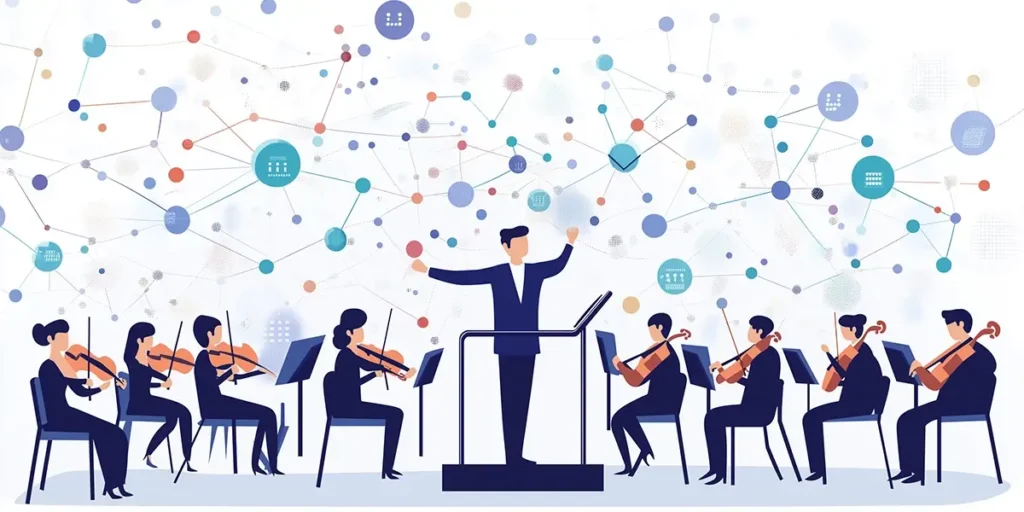This article covers the importance of SIAM governance. Picture yourself overseeing a complicated IT environment with various vendors responsible for distinct services. Some reply quickly, whereas others are harder to reach. Deadlines are ignored. Communication fails. Teams hurry to identify who is responsible for every assignment. The result? Inefficiency, lost hours, and overlooked chances that could greatly harm your business.
This scenario is increasingly common today, as rapid digital change, increased complexity, and tight deadlines have become the norm. Although depending on multiple suppliers can be advantageous, inadequate governance is a disaster waiting to happen. The separation of services, ambiguous ownership, and inadequate communication between stakeholders can rapidly lead to inefficiencies that threaten business outcomes.
Nevertheless, a more effective approach exists – one in which collaboration is prioritized, transparency is essential, and service management functions effortlessly. This is Service Integration and Management (SIAM) governance: a structure created to connect suppliers, optimize operations, and enable teams to achieve business objectives with flexibility and effectiveness.
Challenges in multi-supplier (SIAM) environments
Managing a multi-supplier ecosystem is akin to conducting an orchestra – except there isn’t any common sheet music. Every supplier possesses their distinct tune, and if they aren’t in harmony, the result is dissonance and missed opportunities. The challenges of operating in such a fragmented environment are considerable and impactful:
- Insufficient communication and collaboration – when suppliers work in isolation, important updates are missed, expectations are vague, and teams may duplicate work or create coverage gaps.
- Ambiguous ownership and responsibility – not having clearly stated roles and responsibilities means there’s more work to do. Whenever there are issues, people point fingers instead of looking for ways to solve the problem.
- Lack of insight into performance – the inability to get an overview of a supplier’s performance means tracking delivery performance is guesswork. Bottlenecks are unobserved; thus, continued inefficiencies and possible improvements aren’t recognized.
- Inefficient governance structures – this is because there is a poor governance structure due to having many suppliers, which leads to complex governance structures that can delay decisions and cooperation.
These can become the biggest obstacles that lead to operational failures and affect the whole spectrum of performance and results. Nevertheless, they are not unbeatable, and it’s possible to develop the right plan to make your multi-supplier (SIAM) supplier ecosystem work like clockwork.
SIAM governance: The solution to service management fragmentation
SIAM governance provides a systematic method for overseeing suppliers, services, and performance. It’s focused on building a unified ecosystem where all suppliers agree on goals, roles are distinctly defined, and performance is regularly enhanced.
Here’s how SIAM governance facilitates this.
1. Seamless supplier integration
Bringing a new supplier into your ecosystem doesn’t have to be a tedious task. A service management platform featuring in-built SIAM functionalities can expedite and simplify the onboarding process for suppliers. A consistent structure ensures that every supplier is promptly integrated, reducing delays and helping ensure all parties are aligned right from the start.
2. Centralized service management
Overseeing each supplier individually can be daunting. SIAM governance integrates all service management processes into one cohesive workflow. A service management system featuring SIAM capabilities consolidates service requests, guaranteeing uniformity and effectiveness among all providers.
3. Comprehensive governance framework
By overseeing key performance indicators (KPIs) and service level agreements (SLAs) and assessing supplier performance, SIAM governance establishes an organized, centralized method for supervision. A management tool for services featuring real-time dashboards and automated monitoring helps guarantee effective governance, facilitating prompt decision-making and reliable service provision.
4. Real-time performance insights
A primary benefit of SIAM governance is the ability to track supplier performance in real time. Management tools for services featuring user-friendly dashboards and comprehensive scorecards allow for real-time tracking of KPIs, SLAs, and other vital metrics, facilitating the identification of problems, enhancing supplier relationships, and aiding in informed decision-making.
5. Cross-supplier SLA and OLA management
Overseeing SLAs and operational level agreements (OLAs) among various suppliers can be intricate. Yet, a service management platform equipped with SIAM features streamlines the task. It consolidates SLA monitoring, automates notifications for possible violations, and maintains compliance – helping ensure consistently high service quality.
6. Continuous supplier improvement
Assessing performance isn’t merely a singular occurrence but an ongoing process. A service management system incorporating SIAM elements facilitates the implementation of continuing performance evaluations and the collection of consistent feedback. This continuous assessment encourages ongoing improvement, helping ensure your suppliers keep evolving and delivering increased value.
7. Streamlined decision-making and action tracking
Effective SIAM governance involves more than just tracking performance; it requires taking action. A service management tool with SIAM capabilities allows you to monitor decisions, arrange meetings, and guarantee the completion of action items. These tools facilitate alignment, tracking, and accountability for your internal teams and suppliers by consolidating everything in a single location.
A unified ecosystem: The result of SIAM governance
Let’s discuss the true functions of SIAM governance. Envision a work environment where teams and suppliers function in isolation, inadvertently interfering with one another. SIAM intervenes to resolve that chaos. What is its purpose? To transform disorder into teamwork. Aligning everyone’s efforts toward common objectives clears up the confusion – no more blaming others for mistakes. Instead, you have teams communicating candidly, clearly defined accountability, and immediate transparency to ensure nothing gets overlooked.
Now, consider the instruments that enable this to happen. Contemporary service management systems with integrated SIAM functionalities are more than stylish interfaces. They serve as your command hub for managing several vendors while maintaining peace of mind. Envision automated processes that eliminate hours of tedious tasks, integrations enabling suppliers to collaborate effectively, and real-time analytics revealing what’s effective (and what isn’t) – all consolidated in a single location.
Here’s why this is important now – companies are not just adopting technology; they’re swiftly trying to keep pace with rivals. If your suppliers aren’t in sync, you’re constructing on unstable ground. SIAM governance serves as the cohesive element – providing your organization with the framework, resources, and guides to not only oversee suppliers but also to enhance their respective contributions. The outcome? Less stress for your team, enhanced client experiences, and a supply chain that fosters growth rather than conflict.
The main takeaway? SIAM is essential in an environment where a business depends on a network of collaborators and resources. It’s the contrast between urgently dealing with crises and having a thriving environment that flourishes even during turmoil. Whether you’re reinventing outdated systems or expanding innovation, mastering SIAM governance helps ensure that your business is not only enduring the turmoil – it’s designed for it.
Nitish Deepak
Nitish Deepak is a Product Manager at HCLSoftware, where he manages HCL SX, an AI-powered service management product. With over a decade of experience in the tech industry, Nitish has built expertise in analytics, consulting, strategy, design, and management of IT products and platforms. He has a keen sense for uncovering actionable insights through research and is always driven to stay ahead of emerging industry trends.
Before joining HCLSoftware, Nitish gained valuable experience at Tata Consultancy Services (TCS), HCL Technologies, and Boston Consulting Group (BCG), where he honed his ability to align technology with business strategy, driving innovation and growth across a variety of industries. This experience also helped him develop a talent for simplifying complex concepts, making technology and AI more accessible to stakeholders.
At HCLSoftware, Nitish blends his consulting background and product management expertise to guide the lifecycle of HCL SX, ensuring it stays at the forefront of AI-driven enterprise service management. His focus remains on leveraging emerging technologies to improve operational efficiency, enhance customer experiences, and deliver impactful solutions for enterprise clients.
Outside of work, Nitish is a trained vocalist with a keen interest in sports, reflecting his well-rounded approach to both professional and personal passions.

